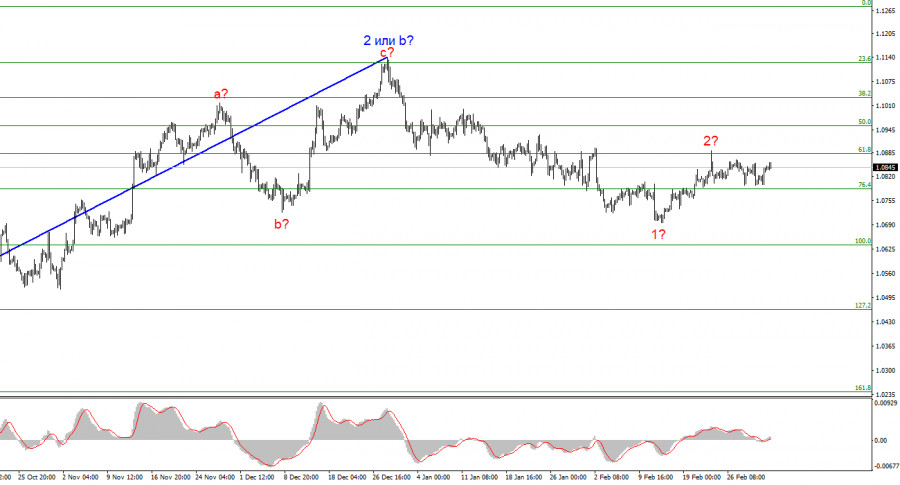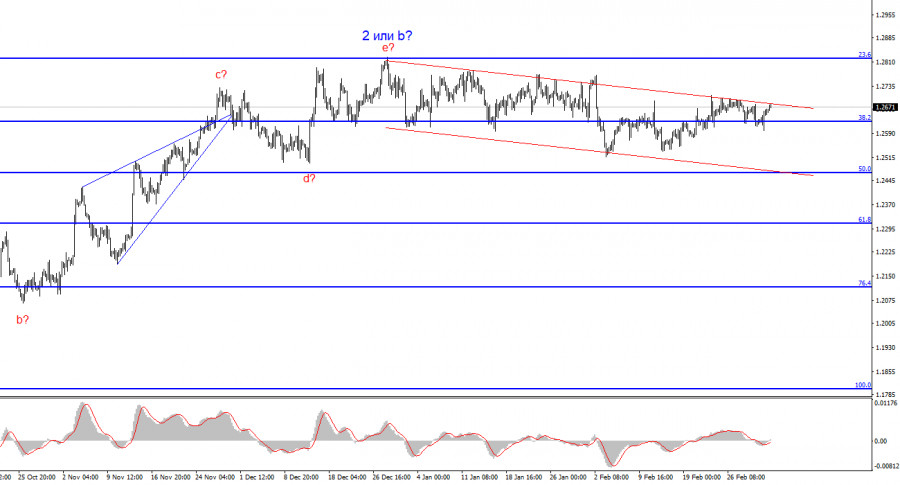

Cleveland Federal Reserve President Loretta Mester said Friday that inflation is still an issue for the U.S. central bank. Before briefly discussing Mester's speech, I want to remind you that the market has already accepted the idea that the FOMC will not start lowering rates until June. I'm saying "not earlier" because there is no guarantee that this key event will happen precisely in June; I am not confident about this. Do recall that at the beginning of the year, the market expected the first rate cut in March. However, Fed Chairman Jerome Powell and his colleagues dashed investors' hopes so quickly that the market immediately changed its expectations to June, not May.
However, there is no guarantee that something similar won't happen again in the future. I will also remind you that the Fed's policy is entirely dependent on inflation. Unlike central banks in the European Union or the United Kingdom that are forced to keep an eye on GDP, which threatens to show only negative values in 2024, the Fed is not dealing with such a problem. The Fed can keep the rate at its peak value for as long as necessary to achieve the inflation target.
Now, let's imagine a scenario in which inflation will decrease very slowly or not at all in the coming months. You see, this is what Loretta Mester pointed out: the Bank cannot rely on the pace of disinflation from 2023. So what else can the Fed do but wait?

Mester also mentioned that consumer demand would continue to decline, and along with it, economic growth. Employment growth will slightly decrease, and in particular, the Fed needs to see that employment growth is declining before it starts lowering interest rates. Mester has previously said she projected three rate cuts in 2024, which, as we can see, sharply contrasts with market expectations. In January, the market was dreaming of six rounds of policy easing. Everything indicates that the Fed's policy this year will be significantly tighter than the market expected. This should increase demand for the U.S. dollar, aligning with the current wave analysis.
Wave analysis for EUR/USD:Based on the conducted analysis of EUR/USD, I conclude that a bearish wave set is being formed. Wave 2 or b is complete, so in the near future, I expect an impulsive downward wave 3 or c to form with a significant decline in the instrument. An internal corrective wave is currently being formed, which may already have a complete form. I am considering short positions with targets around the level of 1.0462, which corresponds to 127.2% according to Fibonacci.

The wave pattern of the GBP/USD instrument suggests a decline. I am considering selling the instrument with targets below the 1.2039 level, because Wave 2 or B cannot last forever, just like the sideways trend. A successful attempt to break through the 1.2627 level generated a sell signal, but at the moment, I can also identify a new sideways trend with the lower boundary at the 1.2500 level. In my opinion, this level currently acts as a limit for the pound's decline. Wave 3 or C from the downtrend has not started yet.